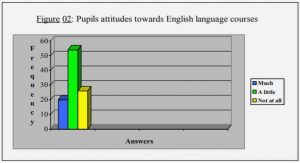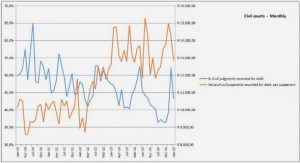Get Complete Project Material File(s) Now! »
Bud Development
Generally, template trees develop strategies to cope controlled by interactions between environmental and internal factors. The seasonal cycle of growth and dormancy is a distinct feature of perennial plants and represents one of the most basic adaptations of trees to their environment. The recurrent transitions of meristems into and out of dormancy are of primary significance to plant productivity and survival. These transitions are tightly linked to the yearly dates of bud flush and bud set, and delimit the growing season. Trees use environmental cues, such as photoperiod and temperature, to synchronization mechanisms time growth and dormancy transitions (Fig. 2.2) (Rohde and Bhalerao, 2007).
Bud Formation
Apical bud formation and autumn senescence are accelerated by low temperature and longer nights, and clones exhibiting a late senescence had a faster senescence. Apical bud formation and autumn senescence appeared to be under the control of two independent critical photoperiods, long days (LDs) and short days (SDs). However, senescence could not be initiated until a certain time after bud set, suggesting that bud set and growth arrest are important for trees to acquire competence to respond to the photoperiodic trigger to undergo autumn senescence (Fracheboud et al., 2009).
Poplar belongs to group of tree that shows continuous growth under long days and short days induce cessation growth and bud formation (Rohde et al., 2002; Ruttink et al., 2007). Low temperatures have been shown to induce apical bud formation and dormancy of Populus tremula × Populus tremuloides Michx. even under long days (Welling et al., 2002). However, when studying temperature and short photoperiod interactions, warmer temperatures have been shown to induce earlier apical buds formation, growth cessation and dormancy development (Kalcsits et al., 2009; Molmann et al., 2005). Bud set condition can be mimicked by short day treatment. Apical bud formation begins immediately after the onset of short day, although it is not readily visible from its initiation. (Ruttink et al., 2007). Apical bud set is achieved within 5 weeks in P.tremula × P. alba under a photoperiod of 8 h.day-1 (Rohde et al., 2002). Inside the forming bud, organogenesis proceeds to form embryonic leaves sensu stricto, each with two stipules, and leaf primordial without yet distinct stipules (Fig. 2.3)(Rohde et al., 2002).
The axillary bud is different development stages at successive node position. The axillary buds exhibit developmental gradient: axillary buds at below the apex position ‘youngest’ will only have initiated bud scales, whereas those in more mature positions will have produced bud scales and foliage leaves. For instance, the P. tremula × P. alba clone INRA 717.1B4 8 months old (3 September 2001) had 65 axillary buds (176 cm height), actively growing non-branched trees in the greenhouse, with a 16 h light per day photoperiod. The first distinguishable axillary bud below the apex only contained cataphylls, i.e. true bud scales that arise directly from the primordium (Fig. 2.4). Leaf primordium initiation was first observed in the 10th axillary bud and occurred until position 30th below the apex. Below position 30th, organ number in axillary buds did not increase (Rohde et al., 2007).
Fig. 2.2 : The annual cycle of a Populus sp. Poplars synchronize the onset of the dormant period mainly with changes in day length. Bud flush and bud set delimit the growing season. Prolonged exposure to chilling temperatures will release plants from dormancy. Growth resumes once the temperature passes a critical threshold. Absence of growth before and after endodormancy is caused by different environmental factors (Jansson and Douglas, 2007).
Fig. 2.3 : Schemes of the fate of successive primordia during short day induced apex bud set in poplar and of the morphology of the bud at accomplished bud set (Rohde et al., 2002).
(a) After bud set has been completed, the following units of organs are found inside a P. tremula × P. alba bud (in successive order from outside to inside):
• One abortive bud scale leaf, consisting of two sometimes fused bud scales (primordium _1; absl);
• One incipient bud scale leaf, consisting of two bud scales and a small embryonic leaf lamina (primordium _2; ibsl [not always found]);
• Approximately seven embryonic leaves sensu stricto, consisting of two stipules and an embryonic leaf lamina (primordia _3 to_9; el); and
• Approximately two not yet developed leaf primordia (primordia_10 and _11; lp).
(b) Morphology of the bud after bud set has been completed. As a result of the helical phyllotaxis of the bud, radial sections (R) reveal approximately one-third more organs than longitudinal sections (L). In the schemes of radial and longitudinal sections, embryonic leaf lamina is dark gray and stipules and bud scales are light gray.
Fig. 2.4 : Morphology of the axillary bud of P. tremula × P. alba clone INRA 717.1B4 was harvested on 3 September 2001 from 8-month-old had 65 axillary buds (176 cm height). Greenhouse conditions, light intensity was 100 mol m-2 s-1 at plant level, with extension of the photoperiod to 16 h light.(a) Light microscopy of 1, 10, 20, 30, 40, and 50 below the apex. (b) Number of organs observed within the axillary buds at positions 1, 10, 20, 30, 40, and 50 below the apex (Rohde et al., 2007).
Bud Break
Bud break is the visible event indicating the end of bud dormancy and the start of growth. Buds opening and sprouting are possible after plants were exposed to low temperature in winter until the chilling requirement of buds is fulfilled, and forcing the air and soil temperatures have passed a specific threshold (Hannerz, 1998; Linkosalo et al., 2006). In example, the terminal buds of Douglas-fir (Pseudotsuga menziesii (Mirb.) Franco) seedlings have a chilling requirement of about 1200 h at 0–5°C. Once chilled, temperatures higher than 5°C force bud break via accumulation of heat units (Bailey and Harrington, 2006). Cesaraccio et al. (2004) predict that chilling requirement of Populus tremula is about 154 chilling days at 10.1°C. Strong relationship between winter temperature and dormancy release implies that even small change in winter temperature could have large impacts on the timing of bud break in the spring (Heide, 2003; Linkosalo et al., 2006; Myking, 1999; Myking and Heide, 1995; Partanen et al., 1998; Yu et al., 2010). Warm autumn temperature has been shown to induce deep dormancy. Those affect bud break delay in northern ecotypes of birch (Betula sp.) (Heide, 2003). Myking and Heide (1995) found that bud break of birch (Betula sp.) occurs normally in seedlings over wintered at 12°C, but was erratic and delayed in seedlings over wintered at 15°C and especially at 21°C.
Bud break period is an essential template of plant. That is associated with changes in the content of carbohydrates and other substances, such as nucleic acids, proteins, polyamines, amino acids, organic acids and changes in the respiration rate (Sauter and Vancleve, 1992). Carbohydrates are the main source of energy for the metabolic changes occurring during the dormant period (Landhäusser and Lieffers, 2003). Moreover, soluble sugars are also recognized as important signaling molecules involved in many processes in bud break (Maurel et al., 2004). Besides, nitrogen compounds and nitrogen cycling in woody plants appear to be an important component of nitrogen used efficiency in deciduous trees. A large amount of leaf nitrogen (50% to 90%) translocated from senescing leaves in autumn, stored as protein in shoot and root bark, and xylem ray cells, and then reused during regrowth in spring, after break dormancy (Coleman et al., 2004; Frak et al., 2002)
During bud break initiation in spring, metabolisms in buds are the main sink using soluble mineral from root uptake and metabolic allocate, especially carbon and nitrogen in the other parts of the plant. However, plant remained to several stresses, including light (intensity and day length), temperature, water stress, and embolized vessels. Accordingly, plant developed re-hydration mechanisms allowing buds, stem and root reconnection. Such re-hydration can occur through the replacement of embolized vessels with new functional vessels and refilling of embolized vessels through an active mechanism. The first mechanism is common to all plant species with a secondary cambium, but its efficiency during bud break depends on the timing of radial growth resumption. The second mechanism, i.e. the refilling of embolized vessels through positive pressures in the xylem. For example, walnut induced the recovering of stem pressure, root pressure and the formation of a new ring of functional xylem, whereas in peach the primary mechanism was formation of a new ring of functional xylem (Ameglio et al., 2002; Ewers et al., 2001).
Table of contents :
Chapter 1: Introduction
Chapter 2: Literature Review
2.1 Poplar Biology
2.1.1 Plant Area
2.1.2 Botany and Morphology
2.2 Bud Development
2.2.1 Bud Formation
2.2.2 Bud Break
2.3 Carbon
2.3.1 Photosynthesis and Carbon Storage
2.3.2 Carbon Remobilizes to Bud Break
2.4 Nitrogen
2.4.1 Nitrate Uptake
2.4.2 Control of Nitrogen Uptake
2.4.3 Nitrogen Storage
2.4.4 Nitrogen Remobilization
2.4.5 Nitrogen Impact Plant Growth and Development
2.5 Justification of Hypothesis and Objectives
Chapter 3: Experiments
3.1 Experiment I:
Nitrogen Supply before Bud Break Strongly Impacts Spring Development of One- Year Scion Poplar
3.1.1 Introduction
3.1.2 Material and Method
3.1.2.1 Plant Material
3.1.2.2 Mineral Uptake
3.1.2.3 Root Pressure
3.1.2.4 Sap Flow
3.1.2.5 Plant Harvest and Architecture
3.1.2.6 Nitrogen Analysis
3.1.2.7 Non Structural Carbon Analysis
3.1.2.8 Data Analysis
3.1.3 Results
3.1.3.1 Environments Control
3.1.3.2 Architecture before Start Experiment
3.1.3.3 Bud Break
3.1.3.4 Nitrogen Uptake
3.1.3.5 Root Pressure
3.1.3.6 Sap Flow
3.1.3.7 Plant Architecture
3.1.3.8 Nitrogen
3.1.3.9 Non Structural Carbon
3.1.3.10 Mineral Uptake
3.1.4 Discussion
3.1.4.1 Nitrogen Uptake
3.1.4.2 Root Pressures
3.1.4.3 Sap Flow
3.1.4.4 Plant Development
3.1.4.5 Nitrogen Content
3.1.4.6 Non Structural Carbon Content
3.1.4.7 Mineral Uptake
3.2 Experiment II:
Nitrogen Supply before Bud Break Influence on Early Spring Development of Stump-Poplars
3.2.1 Introduction
3.2.2 Materials and Methods
3.2.2.1 Plant Materials
3.2.2.2 Mineral Uptake
3.2.2.3 Root Pressure
3.2.2.4 Sap Flow
3.2.2.5 Plant Characteristics and Harvest
3.2.2.6 Nitrogen Analysis
3.2.2.7 Non Structural Carbon Analysis
3.2.2.8 Data Analysis
3.2.3 Results
3.2.3.1 Environment Control
3.2.3.2 Architecture before Start Experiment
3.2.3.3 Nitrogen Uptake
3.2.3.4 Root Pressure
3.2.3.5 Plant Architecture
3.2.3.6 Water Content
3.2.3.7 Nitrogen Content
3.2.3.8 Non Structural Carbon Content
3.2.3.9 Mineral Uptake
3.2.4 Discussion
3.2.4.1 Nitrogen Uptake
3.2.4.2 Root Pressure
3.2.4.3 Plant Development
3.2.4.4 Nitrogen Content
3.2.4.5 Non Structural Carbon Content
3.2.4.6 Mineral Uptake
3.3 Experiment III:
Nitrogen Supply before Bud Break Influence on Early Spring Development of Poplars Dependent on Low Temperature during Winter
3.3.1 Introduction
3.3.2 Materials and Methods
3.3.2.1 Tree Preparation
3.3.2.2 Mineral Uptake
3.3.2.3 Plant Characteristics and Harvest
3.3.2.4 Water Content
3.3.2.5 Nitrogen Analysis
3.3.2.6 Data Analysis
3.3.2 Results
3.3.3.1 Architecture at Start Experiment
3.3.3.2 Environment Control
3.3.3.3 Nitrogen Uptake
3.3.3.4 Water Content
3.3.3.5 Timing of Bud Break and New Shoot
3.3.3.6 Nitrogen of New Shoot
3.3.3.7 Mineral Uptake
3.3.4 Discussion
Chapter 4: General Discussion
4.1 Nitrogen Uptake
4.2 Nitrogen Uptake before Bud Breaks Influence on Nitrogen and Non Structural Carbon Reserve
4.3 Nitrogen Uptake before Bud Breaks Influences the development of Re-growth early Bud Break
4.4 Nitrogen Uptake before Bud Breaks Influence on Mineral Uptake
Chapter 5: General Conclusions and Recommendations
5.1 Conclusions
5.2 Recommendations
Chapter 6: References
Chapter 7: Appendix
7.1 Nutrient Uptake Measurement
7.1.1 Recirculating Nutrient System
7.1.2 Computation of Nutrient Uptake
7.2 Root Pressure Measurement
7.3 Sap Flow Heat Balance Measurement
7.3.1 The Theory
7.3.2 Sensor Design
7.3.3 Sensor Installation
7.4 Nitrogen Content Measurement
7.5 Estimation Nitrogen Mobilization of Compartment Tissues
7.6 Non Structure Carbon Content Measurement
7.6.1 Extraction Non-structure Carbon
7.6.2 Analysis of Glucose, Fructose, and Sucrose
7.6.3 Analysis of Starch
7.6.4 Preparation Chemical for Analysis Non Structure Carbon Content
7.7 Estimation Non Structure Carbon Mobilization of Compartment Tissues
7.8 Embedding in LR-White Resin and Bud Sections
7.8.1 Embedding in LR-White Resin
7.8.2 Section Bud Sample
7.9 Data Analysis





